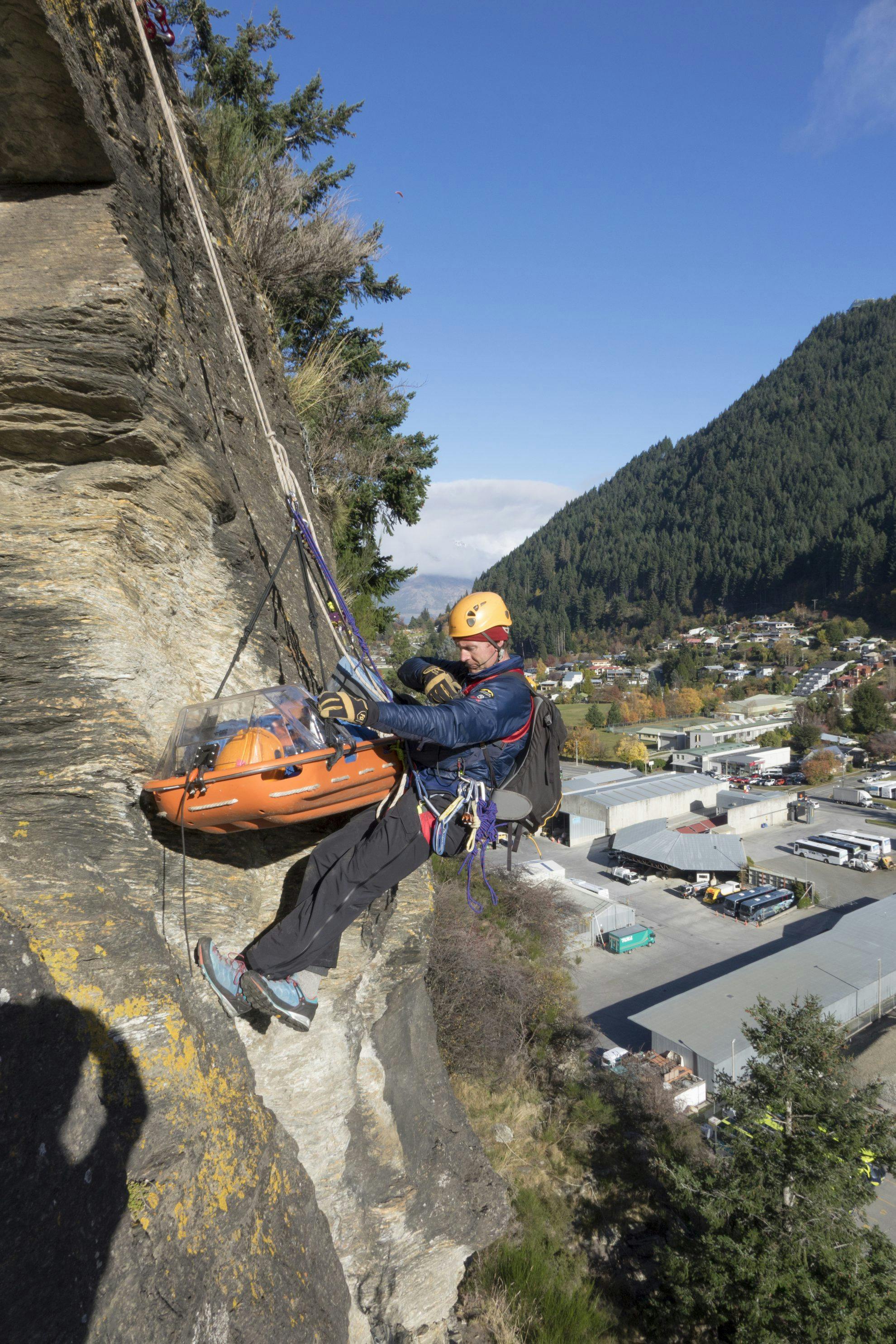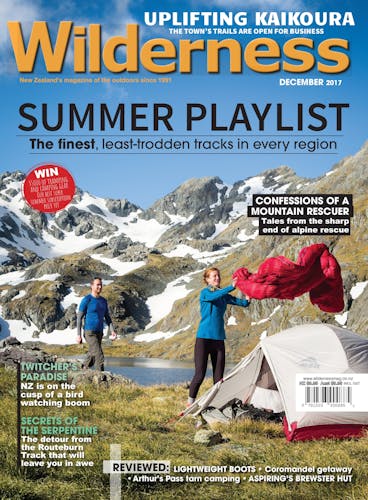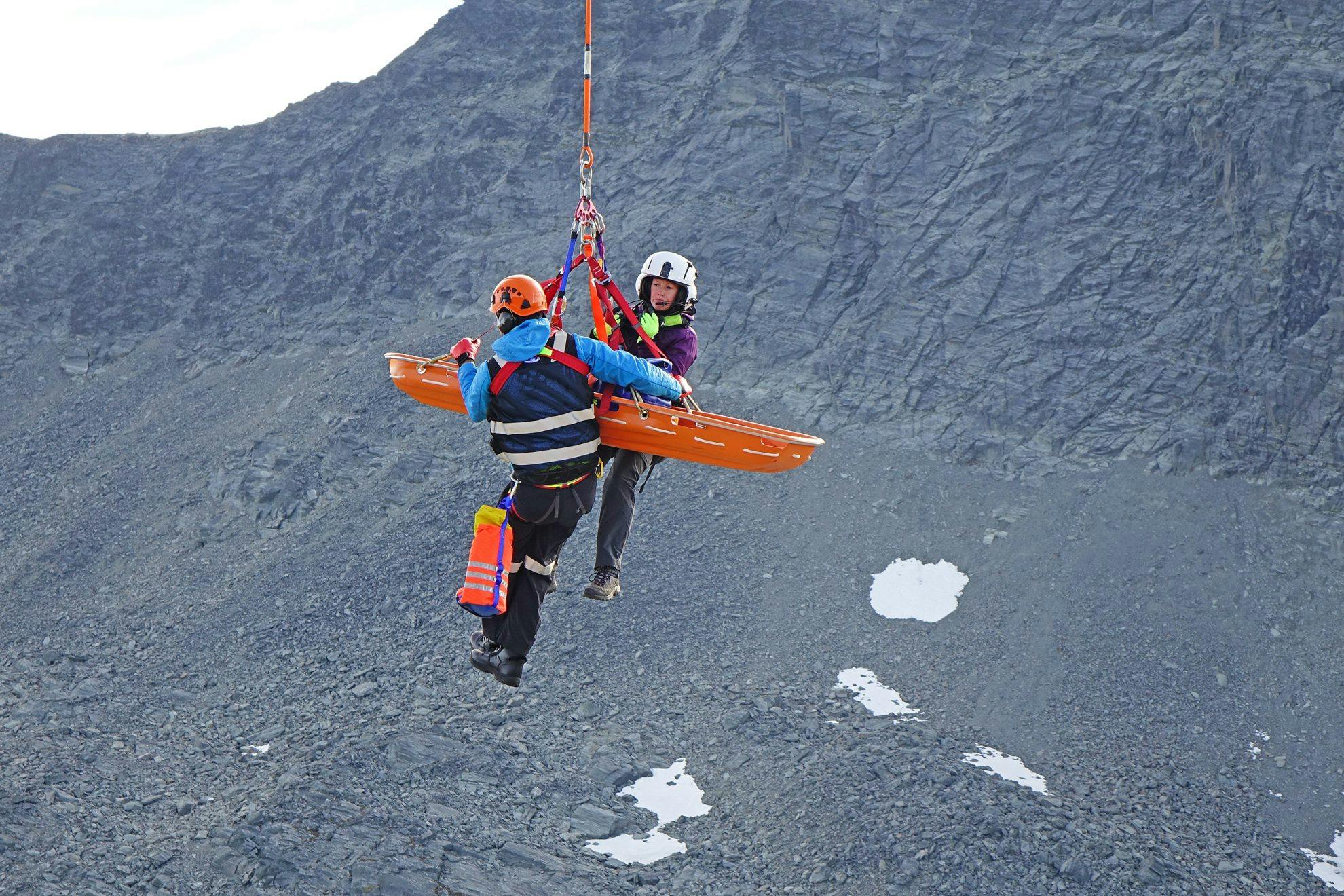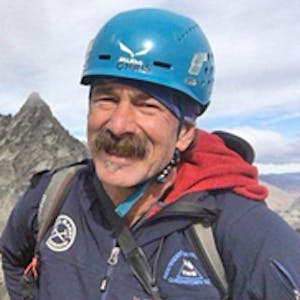After nearly 40 years as a LandSAR volunteer, alpine cliff rescue specialist Chris Prudden has seen it all. He shares some recollections of his time helping people out of strife.
All search and rescue operations have a serious overtone because they involve some degree of human distress or even loss of life. For an operative to have the ability to take the edge off the situation, a sense of humour can be a great addition to their skill set, especially when there is exposure to high risk or trauma. It can temper the headspace of both rescuer and patients – even if they are relatively uninjured.
But one thing all rescue operations have in common is that in one terrible moment, a fun and exciting day on a mountain has turned to custard and the victim just wants out of that threatening environment. That’s the job, no matter what.
Hold on tight
One of my first pickups on Mt Taranaki (I was 20-ish) came after we found a deceased climber on the mountain at about 2300m, at midnight.
On approach, I thought he was alive – eyes open, looking at me in the torch light – but the first touch confirmed he was frozen.
The next morning, I flew in the local helicopter to retrieve the body. Billowing cloud was racing around from the west, and there was high urgency to load and leave.
The crewman and I loaded the body into the back of the heli and the pilot motioned for me to get in. But where?
I clambered in, uncomfortably on top of the frozen body, and the heli lifted and pulled sharply to the right to run in front of the rapidly approaching cloud bank. As the inertia increased, I became aware that without that force acting on me I would fall out of the helicopter (the door was locked open). With flailing arms, I scrambled to grab the seat belts without success, my heart felt like it was bouncing into my throat as the heli levelled out and we flew away from the mountainside. Talk about an adrenalin rush!
Head in a hole
I had just made it back to Tahurangi Lodge after guiding two clients to the summit of Mt Taranaki when a call came in of an incident high on the mountain. Paramedic Steve Orr was 10 minutes away in the heli.
We flew up the mountain, menaced by incoming cloud. The pilot suggested we unload while he hovered. Steve was out quickly and I passed the packs down as we hovered about a metre above the mountainside. I stepped onto the skid and closed the door, then lowered myself towards the ground. Just as I was about to let go, the heli lifted 10m with me hanging by the crook of my arm. I thought ‘oh no, the pilot thinks I’m off and he’s going to fly!’.
The heli eventually lowered and as soon as I detected a survivable drop, I let go of the skid. There was a whoosh of sound and rotor wash and the heli was gone.
“Happy to get out of that, eh Steve?” I joked.
We climbed higher, and could soon hear voices. As we approached in the whiteout, I became aware of something in the air sticking to my face.
Too warm for snow I thought and then realised it was goose down blowing in the wind from a ripped jacket.
When we reached the accident, I was bemused by the scene. While still a serious situation, two local climbers had found and extracted the victim – a doctor visiting from Hawaii – from a bergschrund (mountain hole). He had fallen in head first, miraculously avoiding a major head injury. But he had smashed his shoulders. Following the extraction, they were rope lowering on very hard and steep snow when the anchor failed and the whole group slid for some time before halting. Hence the ripped jacket and down flying everywhere.
As I built a lowering anchor, Steve prepared the patient. “You know what we need to do,” he said. With head bowed in extreme discomfort, the doctor gritted his teeth and mumbled: “yes”. We bought his arms across his chest to be supported and splinted and he yowled in pain. It was to be an uncomfortable journey off the mountain.
We did multiple lowers through the snow as the thick whiteout turned to darkness. We eventually met the Taranaki Alpine Cliff Rescue (ACR) team and made the shelter of Tahurangi Lodge.
The doctor required surgery and spent six weeks in hospital before returning to Hawaii.
Happy New Year
I now live in Queenstown where rock faces, steep mountainsides and rugged gullies run right into town. In other words, plenty of hazards for the inexperienced and unwary.
One recent New Year’s Eve I was sitting at a local bar on my first beer with Jonno, who is also a mountain guide and on the Wakatipu ACR team.
My phone chimed and Jonno joked that it would be a call for a rescue. He was right: the police needed assistance to retrieve two people stuck in a ravine near Arrowtown.
We arrived at the site as darkness closed in, put our headlamps on and started the journey up the stream. We were accompanied by two police who had already been up the ravine until they were confronted by a waterfall which stopped their progress.
At the waterfall, Jonno tried to lead out with the rope. I thought it was a bit too slippery and it wasn’t long before he retreated with the same thought.
We climbed up beside the waterfall and found a ledge to traverse across and could soon see our two people, stuck under an overhanging rock. Jonno traversed over to the rock on belay and brought them back to the ledge.
They were two Asian photographers on a photo mission, (with a drone in their pack as well). They had lost the track, slid down into the ravine and saw their path was blocked by the waterfall.
We clambered back down the stream and then one of our police support crew signalled midnight and we all cheered in the New Year with cold wet feet.
A best adventure
Ben Lomond (1748m) sits right on Queenstown’s doorstep, casting a shadow over the town in winter. It’s the closest ‘real’ mountain to Queenstown and is a popular day hike during summer.
Even though there’s a well-formed path to its summit, the mountain gets its fair share of call outs.
The untracked south ridge is a popular route to descend. It includes steep faces and gullies broken by small buttresses and eventually ends up in Fernhill. Combine it with the Ben Lomond Walkway on the eastern slope and it makes a good round trip, but there are some route finding skills required to end up in the right spot.
Many people have found themselves ‘stuck’ between rock faces and called for assistance to get out.
One January night at 10pm, I received a call from police saying there was a couple who were unable to continue due to terrain. They were uninjured, well equipped and it was a warm evening so it was decided to leave the rescue until first light.
For us it was a straightforward extraction via strop from the helicopter and the smiling English couple rated dangling beneath the helicopter as the best adventure of their lives. Well, Queenstown is the adventure capital!

The cliffs above Queenstown’s Gorge Road – one person requiring rescue here was wearing jandals. Photo: Supplied
Flip flop on cliff top
A 10pm call, two people stuck on cliffs above Gorge Road, less than a kilometre from central Queenstown. Initially the report was that they were 40m up from the valley floor, but experience has taught me it’s better to be extra equipped. I called ACR team members Karl and Georges. Karl would stop off at our gear base and bring the 100m low stretch rescue rope and extra gear.
Using cell phones and headlamps, we found their location – much higher on the cliff than anticipated. We took the access trail to the Via Ferrata and abseiled to the couple on a cliff ledge. I glanced at my watch, 11pm, and thought ‘home by midnight?’
A Romanian couple were there with very little equipment. The man was only wearing socks after his jandals had failed the climbing test. We had been forewarned about the lack of footwear and had brought some boots with us (and they fitted). Georges climbed back up the abseil line and released it so we could use the extra rope.
I began to lower Karl and the distressed woman over the cliff, at 50m it was clear we needed more rope – and we had it. After a ‘hot join’ of ropes, I continued the lower and we discovered it was a full 100m to safety.
I glanced at my watch; 1am. With the ‘no shoes’ lad, I started down the cliff in abseil rescue mode. It was quite an adventure for him as we pushed through hanging thickets of scrub and lawyer vine and dropped over 10m cliff sections of rock.
He was screaming with fright in places and I was a little frustrated with the growth that hampered our path. Eventually, I could see Karl and the bottom of the cliff, and we were off.
Back in my car on the way home, I glanced at the time: 2am.
Stay on the trail
One summer afternoon we were called to the Routeburn Track. An injured person had been seen floating in a pool below Bridal Veil Falls bridge.
We gathered at the road end – police, medics and ACR. It was getting dark and the person had been floating in freezing water for hours. They needed to be rescued as soon as possible.
We flew in on the strop, through a small gap in the trees, landing on the bridge with our equipment.
We lowered a team member into the stream to package the badly injured and hypothermic person.
We tried to lift them using an anchor in the trees, but we didn’t have much lifting efficiency due to the tight scrub. I dragged the haul line out to the track and rigged a pulley on another tree.
A group of trampers was observing, so I marshalled them into a line so they could help haul on the rope. Soon we had the patient on the trail. He had broken bones, a head injury and was suffering from the cold with diminishing consciousness.
Nothing further could be done on site – he needed immediate evacuation. The heli returned, equipped with night vision goggles, and winched the victim through the trees.
Meanwhile, we rescuers walked the track back to the road end. We later learned that the patient, wearing gym shoes, had slipped after scrambling off the trail to try and get a better photo angle.








